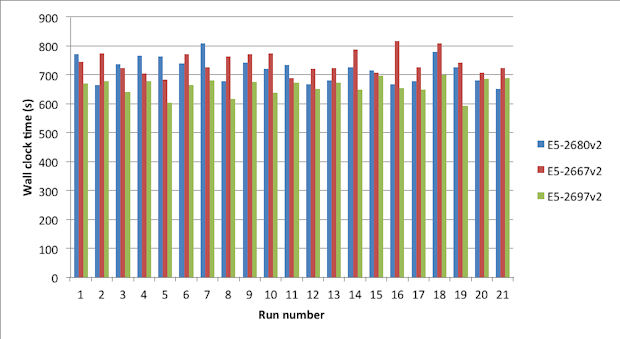Benchmark Study: Optimized Drop Testing with Dell, Intel and Altair
Latest News
July 11, 2014
 Dear Desktop Engineering Reader:
Dear Desktop Engineering Reader:
Drop testing and analysis – aka impact testing and analysis – is a key stage in product design and development. Not so long ago, to do your impact analysis, you had to bust up a lot of physical prototypes and do a post mortem on the data collected from a bunch of sensors. While breaking stuff is still part of the process, and a lot of fun, beating on physical prototype after prototype is mirthlessly expensive and time-consuming.
The advent of simulation software capable of impact analysis changed all that by reducing the need to constantly build and break physical prototypes, saving a lot of money. It also sped up development cycles by enabling you to explore and optimize more design possibilities quickly. The end result has been more robust and higher quality products hitting the market faster.
Still, not all drop test simulations are alike. Analyzing a smartphone’s impact performance is a far different proposition than analyzing a car bumper. A smartphone has many parts, each using different materials. You have to model components and assembly techniques to get an accurate evaluation of the potential damage an impact can cause. And then you have all sorts of angles and loads like twisting and bending to consider. That’s a lot of setting up, simulating and post-processing. It can take a lot of time and tax many a workstation.
Today’s Check it Out link takes you to a paper called “Benchmark Study: Optimized Drop Testing with Dell, Intel and Altair.” This complimentary, nine-page document describes smartphone drop testing using Altair’s RADIOSS impact analysis solver running on high-end Dell high-performance computing (HPC) clusters equipped with Intel E5 v2 series processors. It is a straightforward report, which makes for interesting reading. Further, it brings up key simulation considerations relevant to any engineering outfit regardless of the applicability of impact testing in their pursuits.
The Altair Drop Testing solution, the collective name of the benchmark software setup, is an automated drop testing solution built around Altair’s HyperWorks modeling, analysis and optimization suite of integrated software. Tools included HyperMesh for finite element pre-processing; HyperStudy for exploration, approximation and optimization; the Impact Simulation Director for automating manual tasks like model setup, analysis, post-processing and reporting; and the RADIOSS structural analysis solver. Altair’s PBS Professional handled the HPC workload and job scheduling.
Three Dell PowerEdge M620 blade servers provided the horsepower. Each was equipped with a different Intel Xeon E5-2600v2 processor in a two-node configuration. Total cores ran from 32 to 48. System memory was 128GB per node. Mellanox FDR InfiniBand interconnects were used.
The study ran 21 drop test simulations. The goal was to find an optimized gasket design with characteristics that would minimize filtered stress in the edge elements of a smartphone’s LCD. The test steps were design (HyperMesh modeling), optimization (design of experiment) and verification (finite element analysis and results verification).
The paper reports on what the tests revealed. It has charts on the performance results for each processor and system energy consumption. A chart details the mean time for a single test run and the total time for all 21 runs. The paper provides an analysis of the different hardware configurations and their performance, and it offers a slew of considerations for those looking to optimize configurations for compute-intensive analyses.
“Benchmark Study: Optimized Drop Testing with Dell, Intel and Altair” is a sober yet engaging affair. It’s filled with details that make it readily understandable, and should inspire readers to delve into the details so as to draw their own conclusions. More importantly, this paper makes the broader case for the inescapable logic that scalable software solutions well matched with hardware should be a top priority for tough engineering analysis projects. Hit today’s Check it Out link to download your copy. Well done.
Thanks, Pal. – Lockwood
Anthony J. Lockwood
Editor at Large, Desktop Engineering
Download “Benchmark Study: Optimized Drop Testing with Dell, Intel and Altair” here.
Subscribe to our FREE magazine, FREE email newsletters or both!
Latest News
About the Author
Anthony J. Lockwood is Digital Engineering’s founding editor. He is now retired. Contact him via [email protected].
Follow DE






